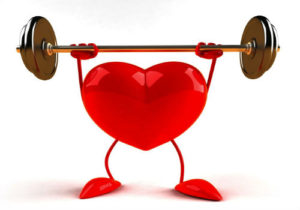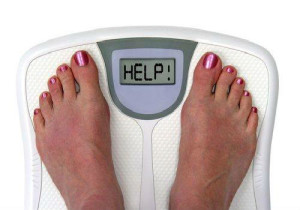Swimming has been considered as the best cardio exercise alongside biking, and running. Unlike biking and running who that only affects a number of muscles, swimming affects all the muscles in the body, with every stroke, every kick, and every pull. Not only has it became a world-wide sport phenomenon when Michael Phelps made history breaking most records and winning most medals, swimming has caught the attention of many individuals that are looking to live the healthy lifestyle. If you haven’t started living healthy yet, and you are having thoughts about choosing swimming as your number one cardio exercise, then perhaps our list would help you out.
10. The ability to do more with less

Swimming doesn’t take much effort. Once you learn the basic strokes, you can very much enjoy the benefits that it gives your body. The statement “the ability to do more with less”, means that with swimming, you may think that you are just mainly burning all those calories you ate the day before, without knowing, you are doing much more than that. With this, your body becomes accustomed to the strength you exert while you are doing your laps, thereby making you more active compared to the time that you have not yet started swimming.
9. Increase muscle tone and strength

As mentioned earlier, swimming makes use of all your muscles in the body, from the muscles in your arms, back, core, and waist down. Once you make it as a routine to swim laps three times a week minimum, the muscles in your body will become toned, to a point that it doesn’t appear over used, giving it just the right look compared to muscles developed while going to the gym. In swimming, you make use of your weight, thru dragging, which is a healthy way of enhancing/toning your muscles.
8. Improved flexibility

Before and after swimming laps, it is important to have a few minutes of stretching. Just a minimum of 15 minutes muscles stretching so that your body won’t suffer sores after. Swimming improves one’s flexibility because every stroke you make involves your muscles reaching length per length. With every stroke you make, your muscles exert effort, therefor stretching it, making it strong, and flexible.
7. A healthier heart

Swimming is a cardio exercise. Cardio specifically means involving the most major organ in the body which also happens to be surrounded with cardiac muscles, the heart. There have been a lot of illness connected to cardiology and most of these patients have lived a sedentary life, eating unhealthy foods, without exercise, thereby making the heart weak. Through swimming, your heart is also having its own share of exercise. With every stroke you make, and every lap you take, your heart pumps blood to give more supply of oxygen to your body. This way, you are giving your heart its own set of exercise, just as what you are doing to your muscles.
6. Weight control

Cardio exercises are best known to lose most body fats and decreasing body weight. That’s why fitness instructors would always consider doing cardio first before muscle toning. In the case of swimming, being the number one cardio exercise, it increases one’s metabolism, making the food that a swimmer takes burn down faster than that of a normal person. Increase in metabolism aids the decreasing of one’s weight. If the person’s metabolism is slow, then he/she is of much greater risk of gaining weight.
5. Improved asthma symptoms

This statement is sometimes underrated, since most would believe that swimming is just an exercise, and really not medicinal. They would think that swimming would only make things worse for an asthmatic person since it involves breathing. What most of these people don’t know is that swimming makes your lung muscles exert effort, thereby causing dilation instead on constriction. Studies have proved that with swimming, asthmatic children or adults have increased lung volume, offering great breathing techniques.
4. Improved cholesterol

We humans have this major addiction for fast foods, and dishes that though considered tasteful and delicious, sometimes offer unhealthy fats. Some fats are considered healthy, others unhealthy and unnecessary. Fast foods contain much cholesterol than that of normal cuisines. With swimming, these unwanted fats or cholesterol are easily burned and evacuated in one’s body.
3. Lower risk of Diabetes

Lowering the risk of Diabetes means relieving one’s self to unwanted calories in the body. One way of doing this is to engage in physical activities such as aerobic exercises. In swimming, the more strength one’s muscles exert, the more sugar they need for energy, all that sugar being used in one’s blood stream is then put to use thereby decreasing the risk for Diabetes. Aside from that, swimming is also the safest physical activity that a diabetic person can perform, as it offers less injury compared to other physical exercise like biking and jogging.
2. Lowers stress, higher spirits and improved brain function

Now this may come as a surprise and some would consider it to be overrated. But studies show that swimming indeed helps lower stress, generates positivity, and improves brain function. While you are swimming, taking those laps, you are experiencing a sense of peace that a Yoga class offers. It stretches your muscles, improves your breathing, and the splashes that the water creates as you make every stroke serves as a chant to your brain. Swimming triggers hippocampal neurogenesis, an action that replaces stress and dead brain cells with stronger, rejuvenated brain cells.
1. A longer life

With all the healthy benefits that if offers, swimming helps you avoid acquiring illnesses and diseases. With constant exercise, it increases the strength of your immune system, therefor helping your body combat against all those viruses that may post a threat in your health. Weight control, improving cholesterol levels, lowering your stress, improving brain function, lowering the risk of cardiac diseases, all these things, they are offered by swimming, avoid all these, and you might just live a longer, healthy life.



